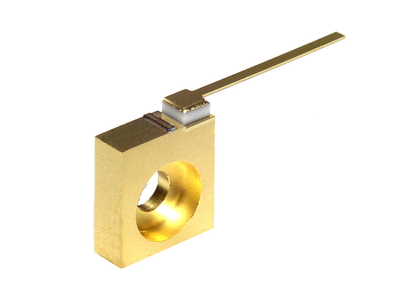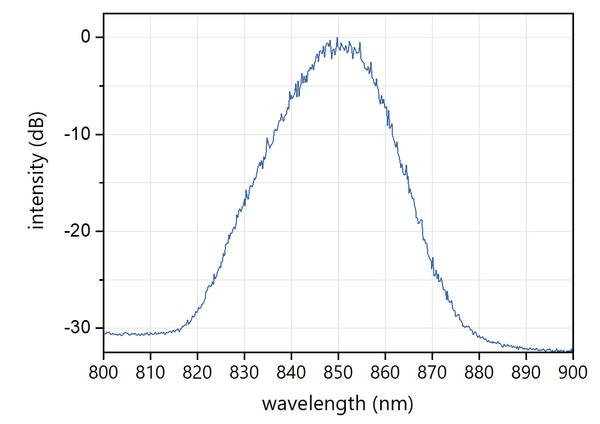

nanoplus offers superluminescent diodes at 850 nm, which are very suitable as gain chips, for OCT and illumination.
|
parameters
|
symbol
|
unit
|
minimum
|
typical
|
maximum
|
|---|---|---|---|---|---|
|
parameters
operating wavelength (at Top, Iop) |
symbol
λop |
unit
nm |
minimum
840 |
typical
850 |
maximum
860 |
|
parameters
optical output power (at λop) |
symbol
Pop |
unit
mW |
minimum
|
typical
15 |
maximum
|
|
parameters
operating current |
symbol
Iop |
unit
mA |
minimum
|
typical
150 |
maximum
|
|
parameters
operating voltage |
symbol
Vop |
unit
V |
minimum
|
typical
2.5 |
maximum
|
|
parameters
spectral bandwidth (FWHM) |
symbol
Δ λ |
unit
nm |
minimum
|
typical
15 |
maximum
|
|
parameters
current tuning coefficient |
symbol
CI |
unit
nm / mA |
minimum
-0.03 |
typical
-0.01 |
maximum
+0.02 |
|
parameters
temperature tuning coefficient |
symbol
CT |
unit
nm / K |
minimum
0.17 |
typical
0.22 |
maximum
0.27 |
|
parameters
operating case temperature (non-condensing) |
symbol
TC |
unit
°C |
minimum
|
typical
+25 |
maximum
|
|
parameters
storage temperature (non-condensing) |
symbol
TS |
unit
°C |
minimum
-40 |
typical
+20 |
maximum
+80 |



nanoplus superluminescent diodes show outstanding spectral and electrical properties.

Typical spectrum of a nanoplus 850 nm superluminescent diode

Typical power, current and voltage characteristics of a nanoplus 850 nm superluminescent diode
If you are looking for a combination of high brightness and low coherence, one of our nanoplus SLDs is the light source of choice. Their emission peak is freely selectable in the range between 760 and 2900 nm and is suitable for any desired application.
